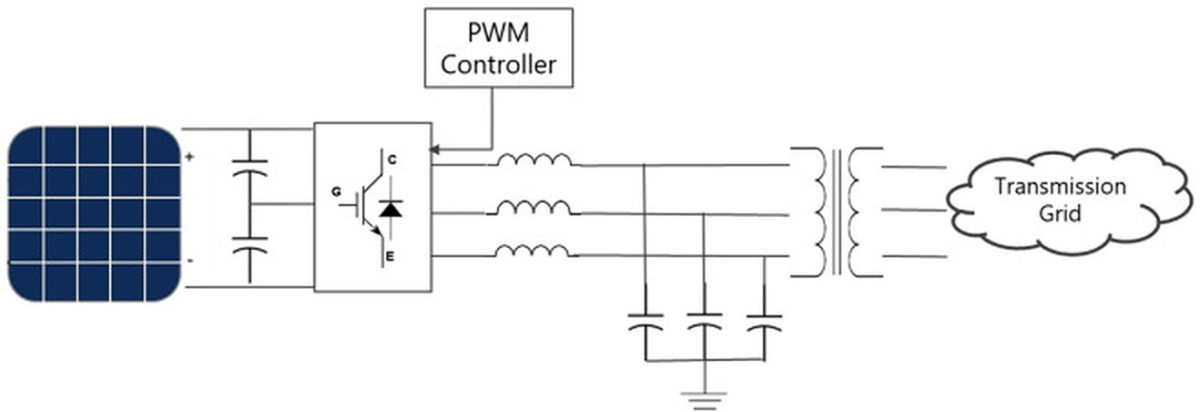From pv magazine global
Scientists from Carnegie Mellon University in have proposed the use of PV inverters instead of expensive voltage compensators to provide voltage support at night. They said this will reduce costs for grid operators and remove a barrier to integrating renewable energy in loosely connected power networks.
The use of PV inverters instead of compensators might provide additional sources of revenue for PV plant owners, although the supply of voltage support from a utility-scale PV plant would require the addition of an augmented voltage controller to the facility, which would also have to be replaced within the lifetime of an asset.
“There is a good case to be made that PV plant operators should be paid for providing voltage support at night,” researcher Jay Apt told pv magazine. “Without additional compensation, it would not be a good business decision for PV plant operators to take on the additional costs.”
He said local ancillary services for reactive power could be created, with generators bidding on reactive power capability on an hourly basis – much like regulation ancillary services. An ancillary service would thus create an efficient market for reactive power prices and provide the revenue needed for PV plant operators to recoup their costs.
“With adequate incentives, PV plant operators can add a revenue stream by providing reactive power support at night,” said researcher Yamit Lavi. “PV plant operators already accept approximately a one-year lifetime reduction of their inverters for currently-mandatory reactive power requirements. Providing reactive power at night will reduce their lifetime by only one additional year and increase benefits to the grid, potentially furthering the adoption of PV.”
Voltage compensators are commonly known as static synchronous compensators (STATCOMs) or flexible alternating current transmission systems (FACTS). They cost between $30 million and $100 million, depending on the size and location. PV inverters are also expensive assets, but they remain unused for about 50% of their lifetimes and the usual voltage support such devices provide during the day is not available at night.
“PV providing reactive power at night has been successfully field-tested in East Sussex UK by National Grid and Lightsource BP argue that using a group of PV inverters for voltage support is about 50 times less costly than installing a FACTS device,” the researchers explained, noting that their work involves quantifying the cost of reactive power from a solar PV power plant. “We make the first comparison of the total cost of utilizing a PV inverter as a substitute for a STATCOM to that of a STATCOM, including wear and tear on the inverter and necessary equipment.”
The academics used a model developed by the Electric Reliability Council of Texas (ERCOT) to determine whether PV inverters can prevent night-time voltage excursions. They also compared costs based on a discounted cash flow model.
They found that PV inverters have an average cost of $20.20 per kilovolt-amperes reactive (kVAR), which they said is between $56/kVAR and $269/kVAR less expensive than STATCOMs.
“This difference has a large range due to the large range in STATCOM costs, which are due the STATCOM size, environmental conditions of the location, and the equipment necessary for installation and interconnection,” they said.
The researchers presented their findings in “Using PV inverters for voltage support at night can lower grid costs,” which was recently published in Energy Reports.
“Our analysis showed that operating PV inverters at night is 4 to 14 times less costly,” the scientists concluded. “The cost difference is due to a shorter lifespan of PV inverters as well as a more detailed discounted cash flow model that accounts for controller replacements.”
This content is protected by copyright and may not be reused. If you want to cooperate with us and would like to reuse some of our content, please contact: editors@pv-magazine.com.









Confusing until I realized that inverters are tied in to backup batteries, Powerwalls, etc. as the power source.
Hope the complications prove worthwhile and storm damage to large amounts of active inverters at night is avoidable without arc-over fires or battery damage.
Otherwise grid operators may face bevies of class action suits from Dewey, Cheatum and Howell.
Actually, it is possible to provide reactive power without a battery input.
When PV goes down at night, inverters can still provide reactive power to the grid working close to zero power factor. The small amount of active power needed to keep the inverters ON can be provided from the grid side.